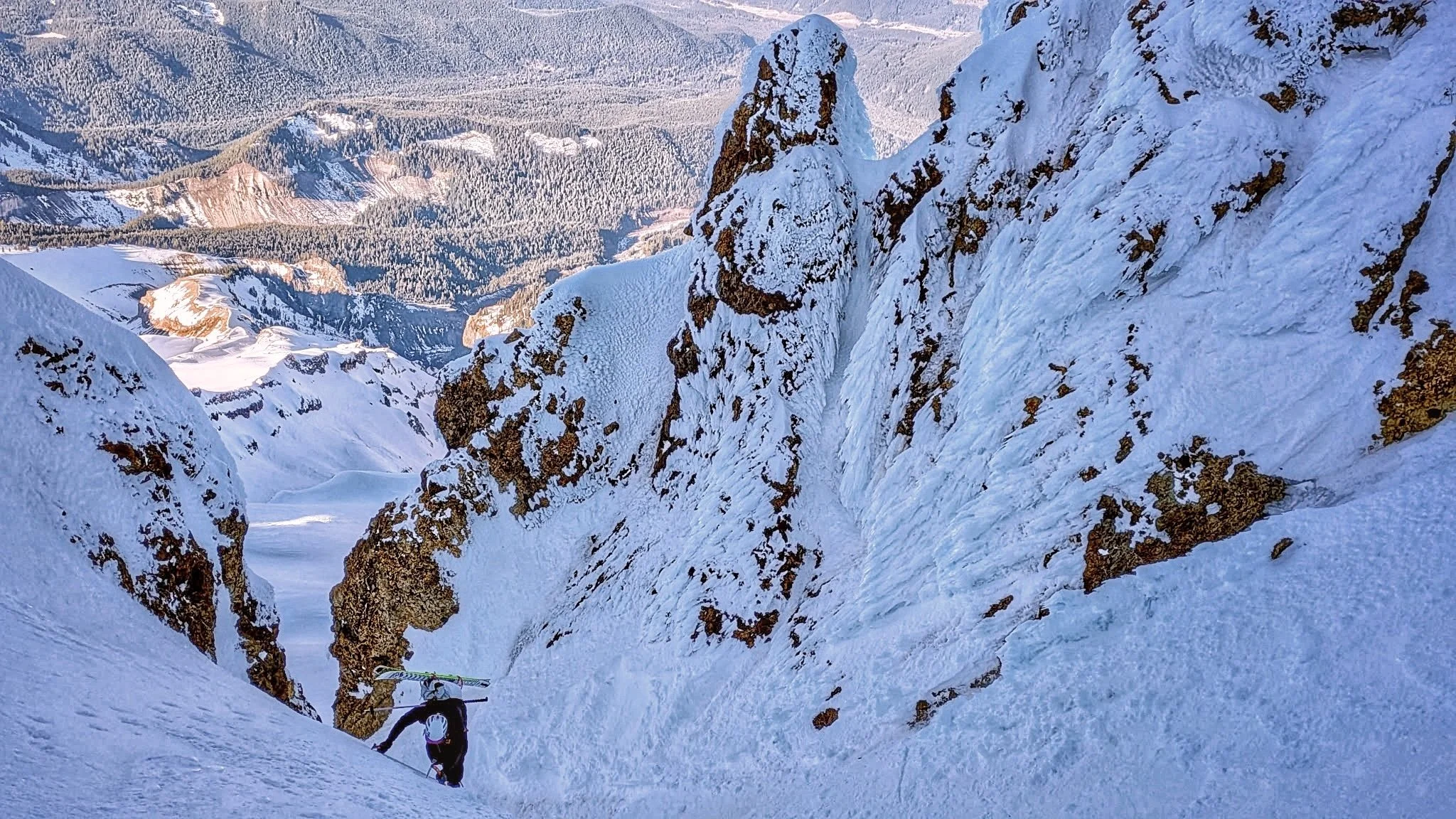Sizing and Fit
At illumination equipment, we don’t just strive to combine the optimal features in the most durable package possible. The reality is, athletes come in all shapes and sizes, and we work hard to design packs that ride well and are comfortable for all body types. The following is a guide to help you decide what torso length and shoulder strap to buy.
-
Torso length is what you would expect: the length of your torso. Or more specifically, the distance between your C7 vertebrae and your iliac crest (the top and most prominent part of your hip bones.) To figure out your torso size, you’ll probably need a friend to help you measure. Stand with your hands on your hips, with your index fingers running level to the floor, along the top of your iliac crest, and your thumbs extending parallel in the opposite direction towards your spine. Ask your partner to measure from the level of your thumbs to the C7 vertebra (the prominent bump at the base of your neck as you slightly lean your head forward.) That number will correspond to the numerical range in the drop down menu on the pack product pages in the web shop.
Don’t have a friend around? Just want to do things the easy way? Take a pack that you know fits you well and measure from the insertion point of the shoulder strap to the bottom of the hip belt. That number will also correspond to the drop down menu. Please keep in mind that due to various pack/shoulder strap designs, this method may not be perfect, so we recommend the first method when possible, especially if the pack has an adjustable torso length,
If you are unsure about sizing, always feel free to contact us and we’ll do our best to help you dial in your fit.
-
To measure your shoulder strap size, take a tape measure and measure the broadest part of your torso (in inches). For men, this is usually around the broadest part of your chest and back. You can use a profile and front view in a mirror to see if you’re too high or too low.
For women, we recommend measuring the broadest part of your torso, immediately below your bra line.
The measurement will correlate to the numerical ranges for each size in the webshop.
If you’re looking for a short hand method for calculating shoulder length size, we got you! For men, take a look at your suit jacket size. For women we recommend you look at the number in your bra size (band size) and subtract 3.
If you’re on the cusp between two shoulder strap sizes, we generally recommend you go with the same size as your torso length.
-
Unlike pack sizing, choosing pack volume is very much a personal decision, and is based on how you like to ski in the backcountry, and what type of gear you carry.
When in doubt, we recommend the Luminary 35. It is a pack that won’t weigh you down on fast and light missions, but has enough volume to handle gear-intensive outings like glacier travel or ski alpinism. For those who are extremely dialed with a minimal overnight kit, you can likely get away with using the L35 as a multiday pack.
The Luminary 27 is the ideal pack for minimalists and free riders. With minimal swing weight and just-enough volume the L27 shines during done-in-a-day fast and light missions, especially when you’ll be managing steep, technical, or exposed terrain with minimal gear. Or you’re teeing up some rowdy lines, and maybe some flips or spins in avalanche terrain.
The Luminary 45 (launching in 2025), is for multiday trips and guides. With the core features of the Luminary series, the L45 includes volume and features particular to multiday expeditions. Similarly, for guides, the extra volume provides extra space for rescue sleds and shelters, robust first aid and repair kits, “just-in-case” ropes and other tools of the trade.

